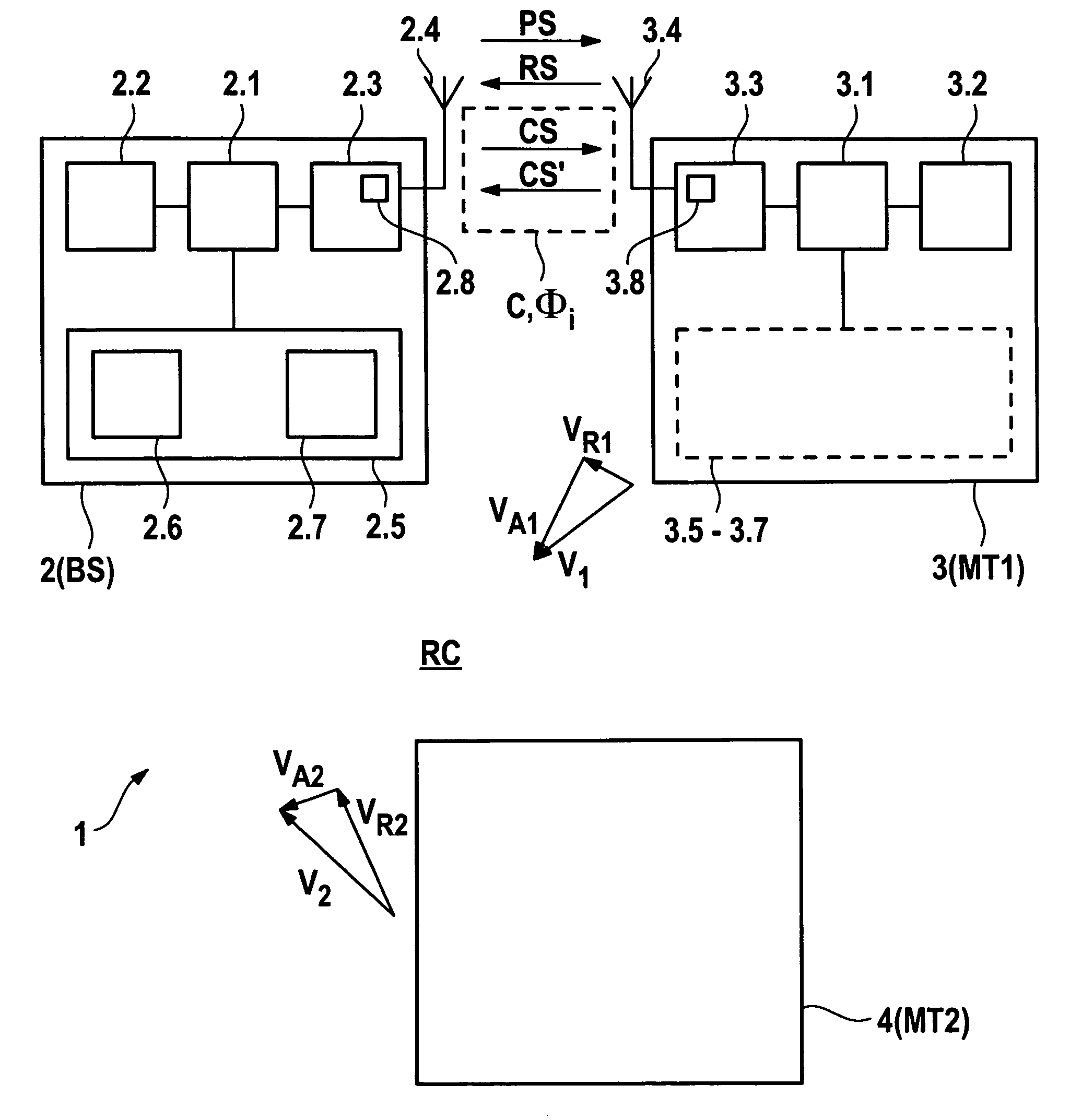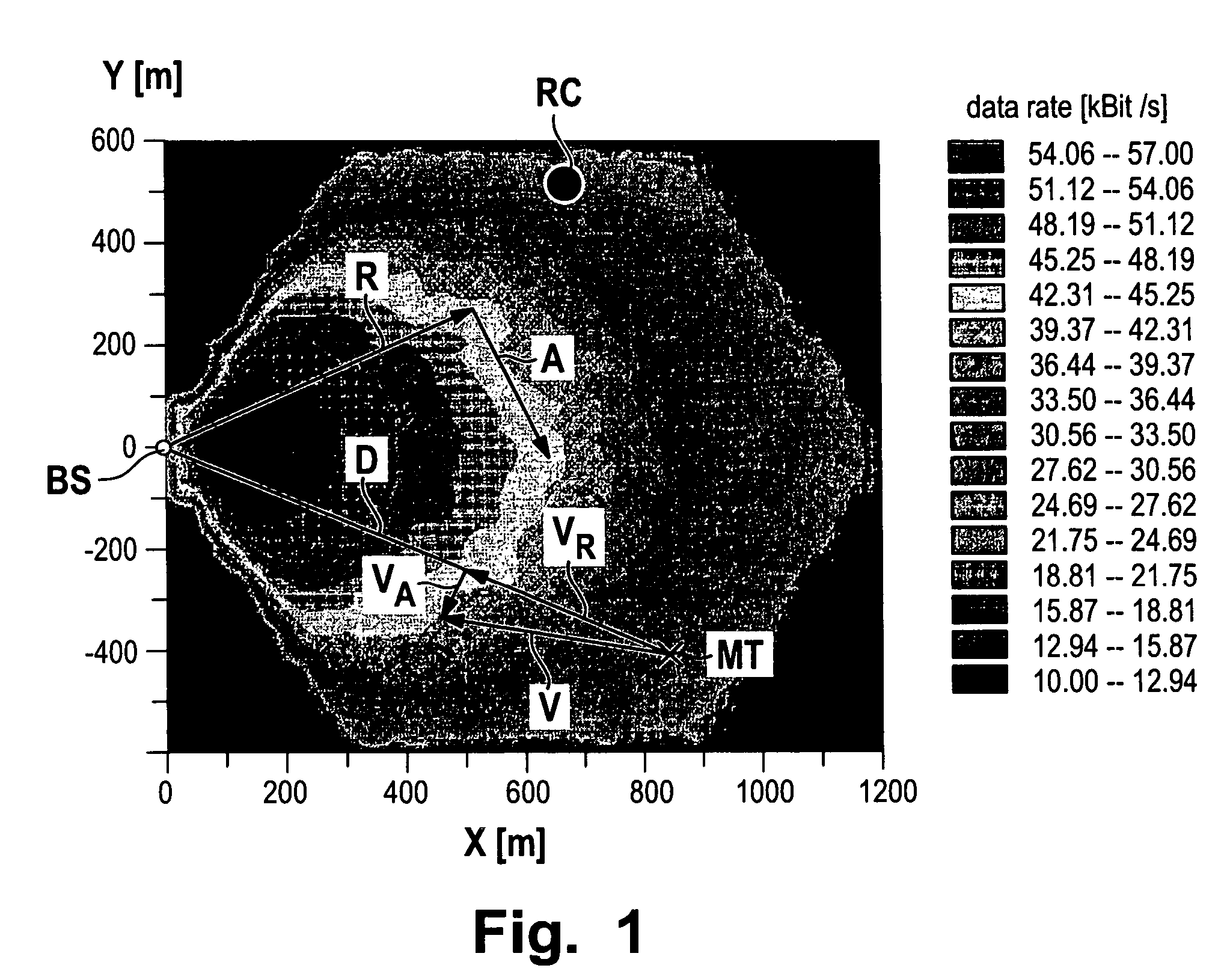System and method for adapting system parameters in radio based communications systems
a radio based communication and system parameter technology, applied in the field of radio based communication systems, can solve the problem of fast adaptation and the lik
- Summary
- Abstract
- Description
- Claims
- Application Information
AI Technical Summary
Benefits of technology
Problems solved by technology
Method used
Image
Examples
second embodiment
[0070] An alternative approach to the problem of determining the distance D is depicted in FIG. 4, which is essentially similar to above-described FIG. 3. FIG. 4 shows a schematic diagram of the radio based communications system 1 in accordance with the present invention, wherein the system 1, i.e. the receiver unit 3 is in operative connection with a satellite-based positioning system SPS such as GPS. Accordingly, the inventive system is adapted to perform the following steps to determine the distance D (or the corresponding propagation time T):One of the units 2, 3, e.g. the receiver unit 3, receives data POS indicative of its own absolute position from the satellite-based positioning system SPS. The receiver unit 3 forwards its position data POS to the transmitter unit 2, and the transmitter unit 2 determines the distance D to the receiver unit 3 taking into account its own absolute position, which can either be fixed in the case of a stationary base station or changing, in which...
third embodiment
[0071]FIG. 5 shows a schematic diagram of the radio based communications system 1 in accordance with the present invention, wherein at least the receiver unit 3 further comprises means 3.9 for measuring longitudinal and angular acceleration, in particular an inertial-sensor system. Provided the transmitter unit 2 has knowledge about the absolute start position of the mobile receiver unit 3, e.g. by means of a position update, the receiver unit 3 then measures its longitudinal and angular acceleration in connection with a motion in the direction of arrow M, the new position of the receiver unit 3 being illustrated by means of a dashed box, and determines its displacement by integration over a time interval. The receiver unit 3 then informs the transmitter unit 2 about said displacement since the last position update by transmitting corresponding displacement data DIS. Using said displacement data DIS the transmitter unit 2 determines the new position of the receiver unit 3, e.g. the ...
PUM
 Login to View More
Login to View More Abstract
Description
Claims
Application Information
 Login to View More
Login to View More - R&D
- Intellectual Property
- Life Sciences
- Materials
- Tech Scout
- Unparalleled Data Quality
- Higher Quality Content
- 60% Fewer Hallucinations
Browse by: Latest US Patents, China's latest patents, Technical Efficacy Thesaurus, Application Domain, Technology Topic, Popular Technical Reports.
© 2025 PatSnap. All rights reserved.Legal|Privacy policy|Modern Slavery Act Transparency Statement|Sitemap|About US| Contact US: help@patsnap.com



